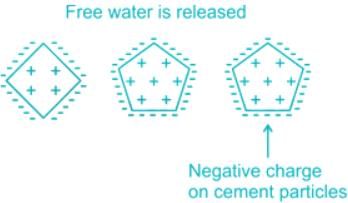Test: Cement, Mortar & Lime - 2 - Civil Engineering (CE) MCQ
10 Questions MCQ Test GATE Civil Engineering (CE) 2026 Mock Test Series - Test: Cement, Mortar & Lime - 2
The field test for the quality of cement consists in putting a small quantity of cement in a bucket containing water. A good quality cement will
A sample of cement is said to be sound when it does not contain free
The cement used in construction of docks and harbours is
For ordinary Portland cement the maximum expansion by Le Chatelier’s method should not exceed
The initial setting time for ordinary Portland cement as per IS specifications should not be less than
As per IS specifications, the maximum final setting time for ordinary Portland cement should be
If p is the standard consistency of cement, the amount of water used in conducting the initial setting time test on cement is
The role of superplasticizer in a cement paste is to
Consider the following oxides
1. Al2O3
2. CaO
3. SiO2
The correct sequence in increasing order of their percentage in an ordinary Portland cement is
|
31 docs|280 tests
|

















